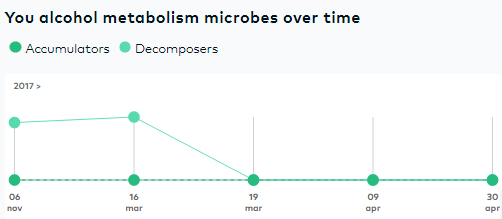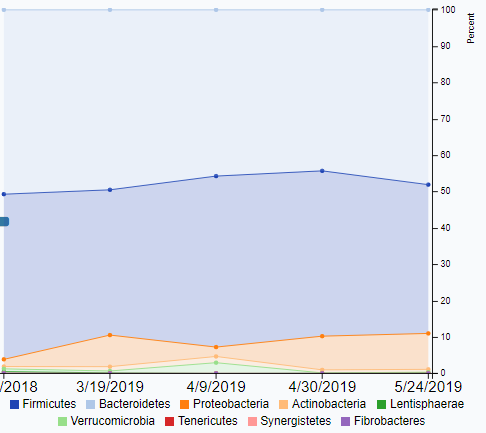Recap of this Journey
For new readers: I have had Myalgic encephalomyelitis/chronic fatigue syndrome (ME/CFS) three times in my life and recovered each time. As a result of work stress, I am currently in a ‘flare’, because it was sudden onset and I realized what it was on day one and took aggressive action it did not become established. Established usually means six months of tests ruling out all of the possible alternative causes for the symptoms!
The model foe ME/CFS that I use is a microbiome dysfunction. I reached this conclusion long before mainstream research started to investigate and confirm that it does appear to be that, Some recent literature:
- Does the microbiome and virome contribute to myalgic encephalomyelitis/chronic fatigue syndrome? [2018]
- Fecal metagenomic profiles in subgroups of patients with myalgic encephalomyelitis/chronic fatigue syndrome. [2017]
- A Pair of Identical Twins Discordant for Myalgic Encephalomyelitis/Chronic Fatigue SyndromeDiffer in Physiological Parameters and Gut Microbiome Composition. [2016]
- Reduced diversity and altered composition of the gut microbiome in individuals with myalgic encephalomyelitis/chronic fatigue syndrome. [2016]
Instead of the usual 6 months of testing for what is not there, I proceeded to get my ubiome done. I had two earlier ones done from when I was in remission. I have an actual base line to compare to. This makes interpreting data a lot simpler. It also mean that I could quickly confirm ‘my gut feeling’ that is was ME flaring.
My earlier posts on the progression are below
First, let us review my perceived changes
Following suggestions from my last microbiome results
I had an interesting experience with a morning bowel of barley (β-Glucan) with unpasteurized yogurt with beet sugar. The first two days, felt good, day 3 & 4 sore throat appeared. Missed a day and sore throat disappear. Back on barley and day 2, sore throat re-appear, more mild than before. Disappeared a couple of days later.
I am assuming that the barley and beet sugar feeds bacteria that are attacking other bacteria significantly. The wife was surprised when she tasted the beet sugar — it was not as sweet as cane sugar. I must admit to be confused by the sugar industry saying they are identical, and do find some support for them being different, like in this article.
Oats or barley for β-glucan
This study compares in the same experiment the β-glucan content of nine barley and 10 oat genotypes grown at two locations in each of two years (i.e., four environments) in North Dakota. Averaged across genotypes, total β-glucan content of barley and oat groat was similar.
Comparisons of β-Glucan Content of Barley and Oat , 1999
Symptom Changes
- Night sweats have largely disappeared.
- Longer periods of mild physical activity before warning signs of two much activity (hiccups — a family trait that my kids always have when they are over tired. Sweats (even on a cold morning with no jacket), lisp in speech appears. By longer, I mean has increased from about 11 minutes until just under 20 minutes.
- I can handle a 20 minute drive fine and keep to that distance bound. When I have gone longer, suddenly a ton of bricks hits, no gradual tiring.
- Longer periods of sleep at night and more sleep. In the past it was short periods only (90-120 minute) then I was awake for a while. Now, I may get up to 6 hrs in a stretch.
- Much more refreshed at waking in the morning.
- Weight loss — some 20 lbs. Little appetite.
- Still experiencing some Multiple Chemical Sensitivity issues, minor — but my work location is toxic with them, so it’s working remotely or leave as the only viable options.
UBiome Results
In my last post I gave the history of my readings for Lactobacillus, Bifidobacterium and Akkermansia. There was a little improvement in two of them,. but they are still magnitudes below my past normals.
Other Good News

Old News – Ubiome Edition






Dropping down to the Genus Level we see we see some of the specific disturbances
On the image below, the 2018 values are from remission, 2019 are during the flare.





In terms of the rare/elusive bacteria, we see many of them disappear as the flare progresses, and strangers appear. The strangers are disappearing and some old friends, like Caldicoprobacter are returning. The high Bacillus count was likely from taking Bacillus coagulans as a probiotic.

Old News – MicrobiomePrescription Edition
In terms of symptoms associated with bacteria, there was a significant drop in the number of Condition Matches. We must be careful not to read too much into that, because a microbiome in the process of changing (which we see above) will not match the patterns of people who are stable.

Bottom Line
The direction is improving. The improvement can be seen in both the microbiome and the symptoms moving closer to my pre-flare state. Recovery is fragile and in one sense, I am likely in the most dangerous time — significant symptom improvement and one could stop being diligent in keeping to a treatment plan. Over the decades, I have seen too many people make a good solid recovery and then crash because they pushed themselves too far in recovery.
My criteria is simple and objective: Microbiome must return to the older state, especially the levels of lactobacillus and bifidobacteria; but also for other genus that either waxed or waned during the flare. Being disciplined and objective is essential.
I am still “living in a plastic bubble” of restrictions. The bubble is slowly expanding.
